Since 2016 in Florence, the Black History Month Florence project has aimed to explore African and Afro-descendant cultures in the Italian context. The research of this project has resonated widely in these weeks of protest by the Black Lives Matter movement, but these are experiences that have been going on for years and it is important to evaluate them from a historical perspective. However, it is also natural that, at a time like this, a strong awareness is being built around the demands of Africans and Afro-descendants, of whom there are many in Italy and who are asking to be recognized. In addition, Black History Month Florence has initiated the On Being Present project with the Uffizi to bring out the pieces of black history within the museum’s collection. We caught up with the director of Black History Month Florence, Justin Randolph Thompson (Peekskill, New York, 1979), an artist and cultural promoter, who has been working between Italy and the United States since 1999, to talk with him about what’s around the project and how Italian history can be enriched through the narrative of black presence. The interview is curated by Federico Giannini, editor in chief of Finestre Sull’Arte.
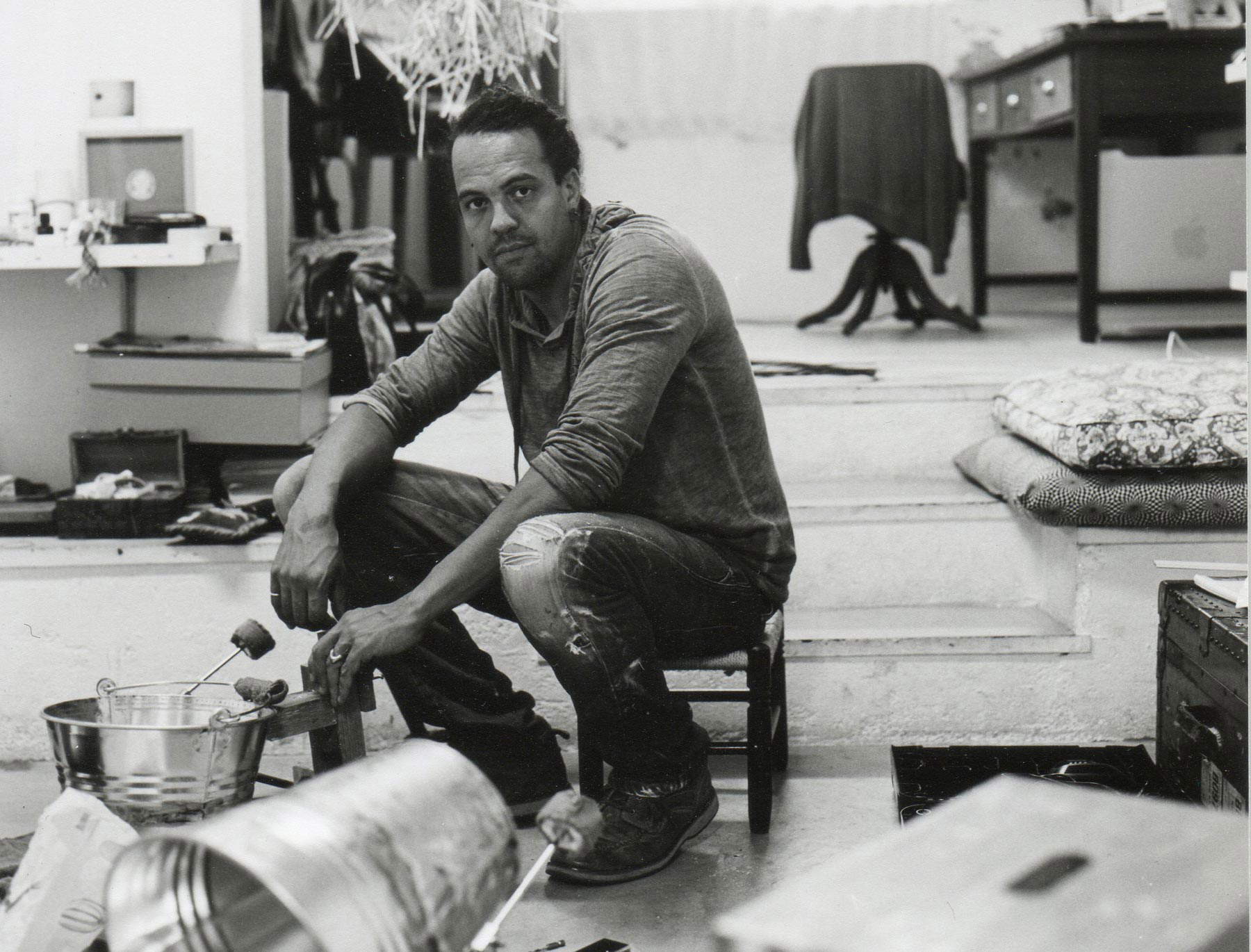
|
| Justin Randolph Thompson. Ph. Credit Maria Gimeno |
FG. I would like to start by mentioning that the Black History Month Florence project is in its fifth edition this year, and in introducing it you talked about “flattening and erasure of black history in the Italian context,” which is why the project was born, five years ago. What do you mean by “flattening and erasure of black history in the Italian context”?
JRT. Afrodescendence in the Italian and world context represents an immense whole of so many different cultures, so many different backgrounds, so many different historical contexts, so many different geographical locations. An immense whole that many times, however, is not recognized in its vast complexity. In the Italian context there is very often, for example, a thinking that links Afrodescendence exclusively to a situation of contemporary migration (and therefore there is not even an understanding of the context of migration, since we are talking about people coming from different countries, from different cultures, with individual histories). So if we talk about Afro-descendancy only from the media perspective of migration, then we are flattening the issue. As far as erasure is concerned, often in the Italian context there is a lack of awareness of the presence of Africans on Italian territory since time immemorial: it only takes a minimum of research in the archives, valid for any historical moment, to discover that there have always been African presences. However, we pretend they have never existed: it is as if there is no historical dialogue with Africa, and this also concerns the little conversation there is around the topic of Italian colonialism. When I came to Italy 20 years ago, I started thinking about Italian colonialism, because as an African-American I wanted to understand what the links to Africa were in Italian history, and when I started to expound on the topic, my interlocutors would not take it well, or they would be disturbed, or they would tell me that it is a very short history and that it did not have a very big impact. But this is a way of erasing an Italian history that is very important to acknowledge, especially when you talk about contexts like Libya (you can see very blatantly how the history went and what relationship it created between Italy and Africa). Then there have been relationships with Africa that have not only taken place in the colonial context: in the past there have been, for example, cultural exchanges that had a whole other valence. Yet it is as if there is a desire to erase this history of relations between Italy and Africa.
Why do you think there is this reaction when talking about African cultural components in the context of Italian history and culture? It is as if uncomfortable topics are being talked about: where does this feeling of disapproval come from that leads to erasure?
It occurs to me that very often, when we talk about these historical moments, in a way people see the desire to tell the full story as an attempt to blame someone, to blame the people of today for the sins of the past: these are very common situations in today’s experience. In fact, the importance of knowing history more fully is not that we need to understand what role this or that person played: instead, it is about understanding certain historical relationships, and how they affected how we live today. Therefore I think that this challenge, in the Italian context, is very particular, because people do not think about the fact that “whiteness” in Italy is something constructed: actually it is not a historical thought, the idea of Italy as a country of whites is a modern concept. It is thought to have always been that way, and people think they have to protect it. But if we also simply look at what peoples have been here through the centuries , it is obvious that Italy is not that homogeneous . Then add to that the construction of this “whiteness” was reinforced with the racial laws during Fascism, and of course this is a very uncomfortable part of Italian history. As a result, part of the aversion to the dialogue around the African continent is also based on the fact that people identify it as a dialogue with the fascist past, and this of course is very difficult territory to deal with, and it is not even the root of a dialogue with Africa, but I think it is something that we in Italy recognize as a tragic moment in terms of the relationship with the African continent. Another thing I notice very often is that there are many people who think that talking about fragments of history that have been forgotten or hidden represents a way of erasing that history that was written by the victors. Instead, it is very important to recognize that what you do with a narrative of another kind is to enrich that history that is always central and difficult to move from the center. But it is also obvious that there are so many parts of that story that are missing, and so it is not complete: if we pretend that this is the complete story, then we can’t help but see it as a kind of threat to try to supplement it with fragments that do not represent the central point of view.
What results has your project achieved in these five years, both in terms of research and in terms of its impact on the public?
There have been several very important achievements in these five years: meanwhile, a network has been organized that did not exist before. We were faced with so many institutions that did not necessarily collaborate with each other, and we managed to put together fifty institutional partners in the same program every year. We are very pleased with this, because it is very difficult to activate collaborations of this kind, especially in the context of art and education, and instead it was one of the results we achieved: this is because we found that when you talk about content of this importance it is easier to get people to get along. We then activated a series of projects that led to very important results: one of them carried out in collaboration with Villa Romana, is called Black Archive Alliance and is dedicated to the Florentine archives (although we are now working to extend it to other parts of Italy as well). One of the ideas from which the project was born is the fact that the archive is perceived as a “protected” place, and therefore there is a belief that only scholars can enter it: consequently, this perception limits research a bit. Instead, we have created a relationship with the archives in such a way as to open them up to even somewhat more speculative research by students who may not be familiar with how an archive works, but who are nonetheless able to collect documents. We thought that from these collections it would be arduous to bring out elements related to Africa, and instead the thing we realized almost immediately is that in any archive, library, collection, Africa is there, and it is not difficult to trace back to sources and information. The thing that is missing, if anything, is people; therefore, we want to stimulate the interest of scholars. We also do this kind of work with students because we are very limited in resources, being unfunded, however, it is actually work that we would like to do with scholars as well: it is just a matter of changing our gaze, looking at the same information with another eye to see what it tells us. Another project that we are proud of and that we started this year in collaboration with OCAD and The Student Hotel is called YGBI, a research residency dedicated to artists under the age of 35, living in Italy and Afrodescendants. We put five artists together for ten days to converse about issues of marginalization and the African diaspora, and we saw some very important reflections emerge, for example about the importance of the construction of an identity that perhaps has not been elaborated before but is very much felt, because in this historical moment being black and being Italian simultaneously is a common condition. There is a conflict that leads many blacks in the meantime not to be recognized as Italians, and then to see themselves alone in a context that would also be theirs: so we were happy, with the YGBI project, to have introduced among them these artists who perhaps perceived this loneliness in the Italian context. Which then, I repeat, is their context: and this is the strange thing! And then as far as the feedback from the public is concerned, I must say that it is very often that we are faced with so many people who simply say, “I didn’t know that.” This is the most common response among the audience. Also, one of the things that we have put in focus through our programming, and which has had some feedback from the audience, is the theme of Italy as a place where there is a reflection on the cultural production of Afro-descendant people, which moreover there are so many of them (just think of the artists hosted by the American Academy in Rome ). And so they come to Italy, they stay here (maybe even just for a year), however, they are interested in the meaning of these cultures in the Italian context: the result is really very interesting reflections.
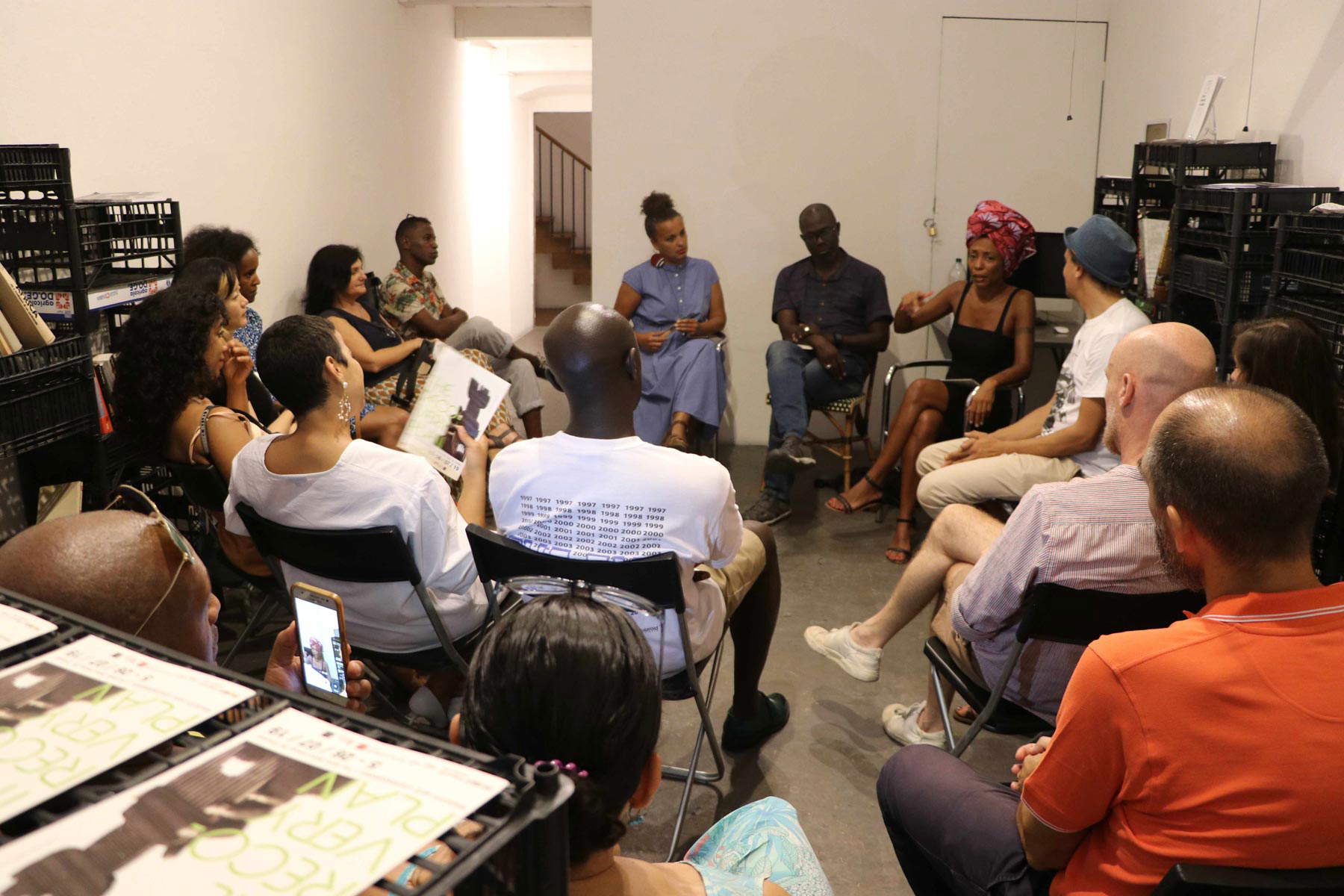
|
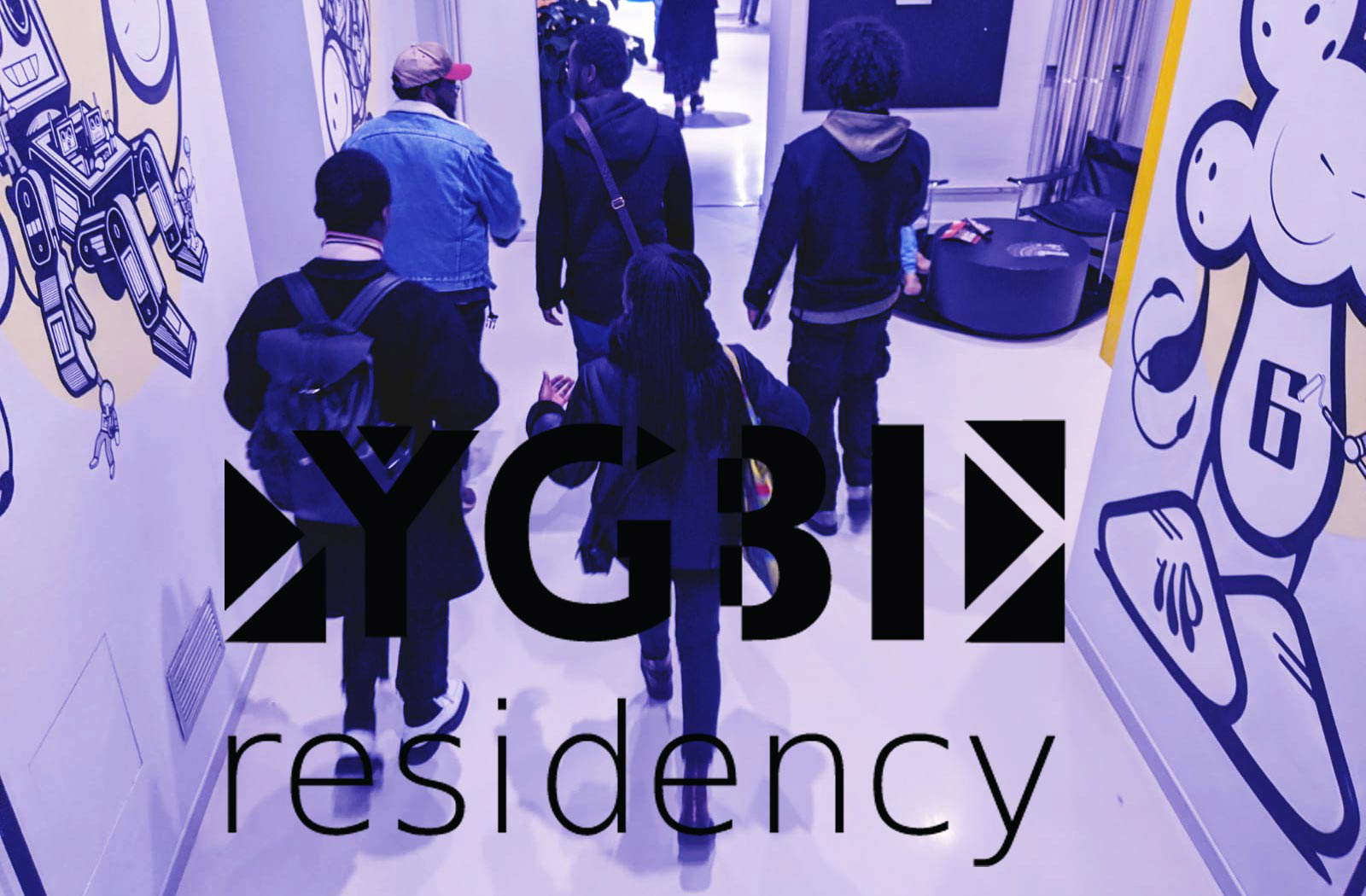
|
You are from the U.S. and have lived in Italy for several years: the cultural contexts of the two countries, the U.S. and Italy, of course are very different, although you can identify commonalities, not only in what is happening today, but also at the historical level. I know it is difficult but, also to better frame what is happening today and therefore to trace the situation today back to its historical roots, could you briefly summarize for us what are the differences between the two contexts?
At the root of it all are the historical differences. The United States was founded on a racist basis, and so the starting point of the United States as we know it is the arrival of whites, from elsewhere, into a territory inhabited by natives. It is a form of colonialism called settler colonialism, which has never been eradicated: indeed, we often do not realize that we are still occupying territory today. However, this is not the way American history is told to us. Moreover, added to this base is the whole long history of slavery, a history on which is then grafted a relationship between Europe and the United States that does not exclude Italy: if we think of some moments of great flourishing of the arts in Italy, we speak at the same time of moments in which people were kidnapped in various parts of Africa and transported to the United States, as part of routes that were financed by many European countries. The money flows generated by the slave trade impacted the whole of Europe, and we have to pay close attention to these aspects. There is also to add that the discourse on African Americans is very complex because we are talking about so many cultures put together to generate a new culture: this is what happened. There is no reference idea of Africa for African Americans, for them Africa is essentially imagined. Then when we think about the whole American construction and also all the things that American history is very proud of (and I am referring, for example, also to the importance of democracy for American society), it is obvious that when this construction was conceived, African American presences were not considered: in short, American history was constructed without taking these people into account. And so that had a huge impact. And then let’s also think about the moment after the abolition of slavery: we should not think that since that moment everything has fallen into place. For former slaves, for example, there was no help from the government, nor did they have full and immediate access to all the rights (for which they had to fight), and in many contexts the African American presence was systematically excluded. In addition, slavery was followed by a period of very strong segregation, and when segregation came to an end we witnessed massive incarceration (in America, where there is the largest prison population in the world, the percentage of African Americans incarcerated relative to the country’s African American population is still completely skewed). In the Italian context, of course, it is a very different story, but we have to remember that there is a part of history, especially modern history, that has tried to rewrite the past (as has also happened in the United States), and therefore has tried not to talk about these cultural exchanges with Africa. An affinity with the United States is the fact that in Italy, too, an idea of Italian-ness (and in some cases even of the superiority of being Italian) has been established, but in reality it does not encompass all ways of being Italian, and this is also where the constant struggles carried on by people who were born here but are unable to be recognized as Italian come from. In short, the common view is that Italian-ness does not include “blackness.” However, it is obvious that if we do not talk about colonialism and the role it also played in the construction of the values of Italy today, it is difficult to come to a true reflection on the state of things, and to recognize why we are experiencing right now all the separation between society and the black community. Although already talking about the black community is very complex; you can do it better in the United States, although it is difficult, because we are talking about so many people and so many differences. This is because if you want, you can define yourself as African American even if you arrived last year from Africa: you do not necessarily have to be descendants of African slaves. In Italy it is even more difficult: one of the things I noticed immediately when I arrived is that, if in the United States there is a very unified vision of being black (because this vision has been built as a function of the fight against racism, which is structural, and therefore any black person has to put up a united front), in Italy this unity is more tenuous. If we talk about black communities in Italy, we have to talk about Nigerian communities, Senegalese communities, Eritrean communities, and also conflicts between the various communities, which also involves further work on the part of Black History Month Florence, because we are working not so much on unity between communities (because that can be a flattening as well), but on sharing spaces and recognizing some things that we have in common especially in terms of fighting racism.
Black History Month Florence has curated On Being Present, a project that the Uffizi has undertaken to bring out the pieces of black culture, especially African culture, found within the museum. In presenting the project she hopes that On Being Present will “contribute to a deeper reflection on the cultural heritage preserved in museums, foreshadowing public debates and specialized research in the years to come.” We have addressed this issue several times in our magazine, but I also want to ask you a question: how can our museums create a more inclusive narrative?
I think, at the end of the day, what is missing very often is positionality, the ability to see the way we position ourselves as individuals or as institutions, and that very often is the biggest obstacle. In other words, when we talk about museums, very often a museum, as an institution, sees itself as almost neutral: but if there is this neutrality, then automatically we also have to pretend that the construction of a collection does not involve a story and a narrative, and that that narrative has been constructed in a certain way and according to a certain point of view. Art history research itself has been constructed in a certain way and according to certain points of view. I don’t think it’s super difficult to frame things, though. For the On Being Present project, we also brought in Renaissance art experts who had never written about black presences in art before, and this change in perspective meant more research in many cases. To get more specific about how to initiate a different narrative, I think it’s not so much about looking elsewhere: it’s about thinking about what the museum’s narrative is at this historical moment, how it stands vis-à-vis the social and cultural situation, and consequently it’s about looking at this situation to see what parts of it should be elaborated and acknowledged. Even simply recognizing the historical position of a museum is a first step in getting somewhere. The classic example is the ethnographic museum: these museums are often not recognized as spaces that are partly built on a colonialist vision, and if you do not recognize this starting point then it is difficult to find an alternative narrative. Each museum needs to see what exactly it represents. Even when we say that a museum represents Italy we have to ask ourselves which Italy we are talking about: there are so many Italies, so many ways of seeing Italy, so many presences of Italian history that have been erased. As far as the Uffizi is concerned, I think they represent a kind of gatekeeper, a guardian of the canon of “Western” art, and if we don’t start from this point of view, saying that this is what they represent, then it becomes difficult to identify what are the spaces of narrative that we simply ignore. I think, for example, of the articles that have come out in the newspapers around our project that have created a lot of confusion, perhaps because most of them have come out now in June and July, whereas the project started in February and the research started in September: so it is very easy to bring up the project in these weeks because people associate it with Black Lives Matter protests without seeing that it is actually a reflection that is needed all the time. And if there had been more such projects in the past, then maybe now so many people would not be angry about our project, saying we cannot touch our heritage. But they say this because there is a definite heritage construction that is ingrained that has been going on for a long time. I’m glad that we were able to bring these things out through a very small and quick research project, but the research that would be needed is much broader: in fact, with the Uffizi, we made it clear right away that it was important to us that this was a project that could go on over the years. So many institutions think that their work is finished simply with an exhibition on Africa. It does not work that way: as with all exhibitions, if we do an exhibition with a certain reflection and never return to that reflection, we have not done a great job. An exhibition should be able to turn into a research and create a deeper reflection.
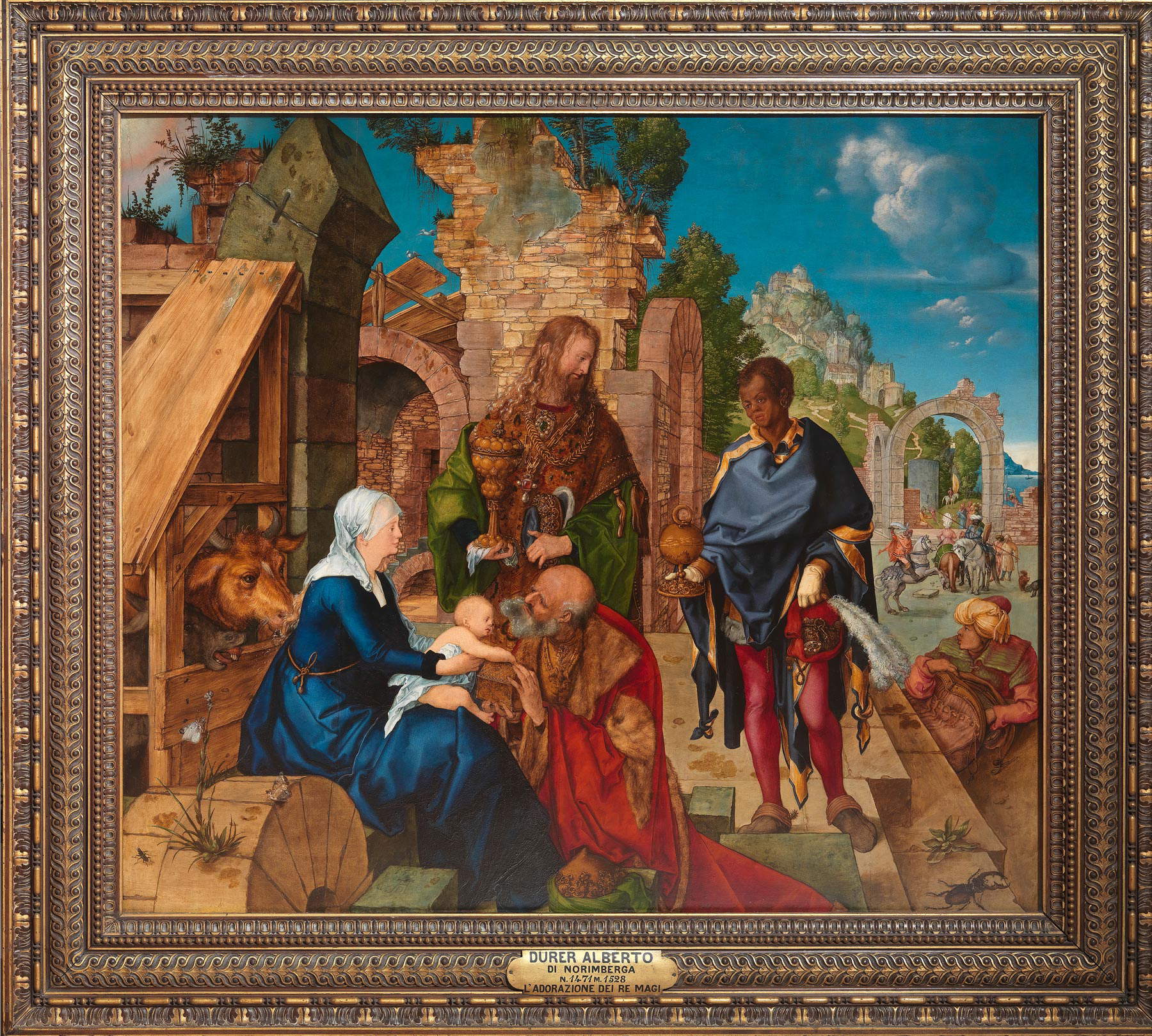
|
| Albrecht Dürer, Adoration of the Magi (1504; oil on panel, 99 x 113.5 cm; Florence, Uffizi Galleries, Gallery of Statues and Paintings) |
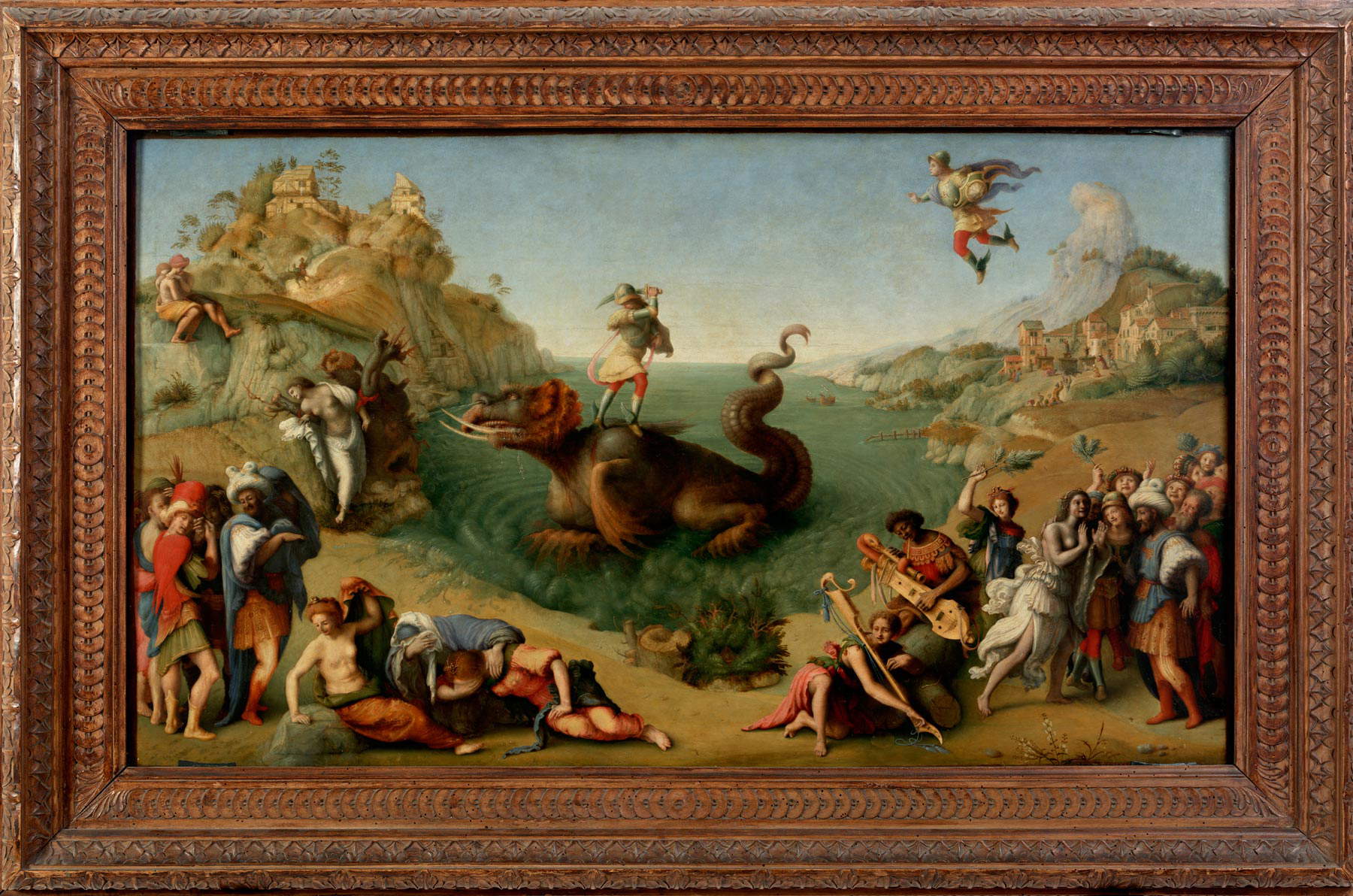
|
| Piero di Cosimo, Perseus frees Andromeda (c. 1510-1513; tempera grassa on panel, 70 x 120 cm; Florence, Uffizi Galleries, Gallery of Statues and Paintings) |
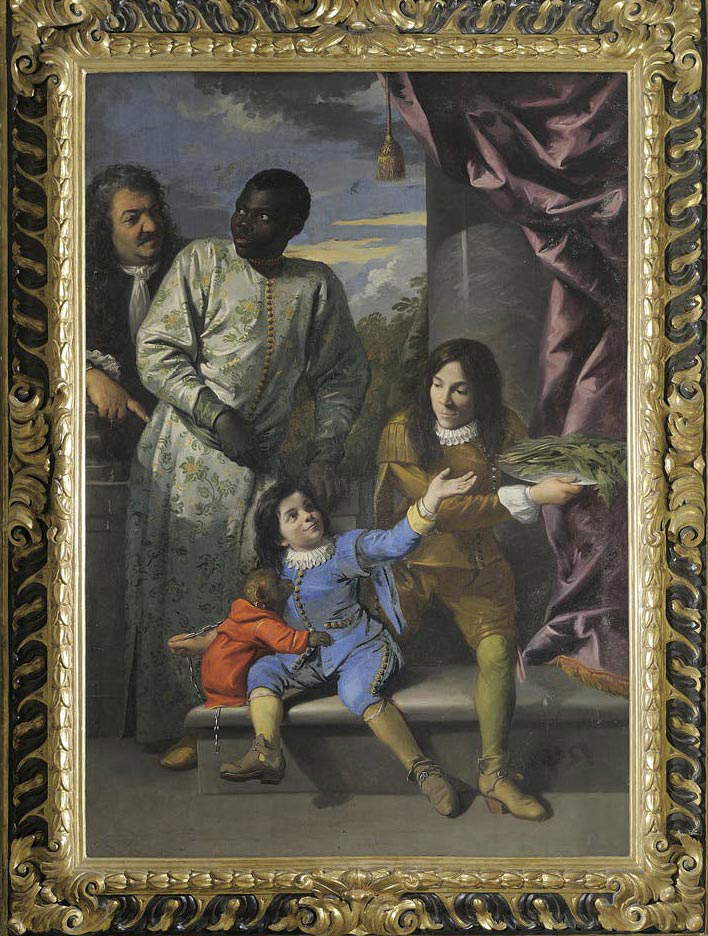
|
| Antonio Domenico Gabbiani, Portrait of Four Servants of the Medici Court (1684; oil on canvas, 205 x 140 cm; Florence, Uffizi Galleries, Palazzo Pitti, Palatine Gallery, Deposits) |
In Italy, however, there are those who resist these projects; there are many who consider them a capitulation to supposed political correctness, for example. What can be done to overcome this resistance?
I think there are many issues around the language we use: for example, being politically correct has now become, in the hands of the media and politicians, a negative thing. Not hurting people by being careful about the terms we use and the ways we approach certain topics is seen as a negative thing, as a lack of freedom. And this lack of freedom is often the freedom to offend. If we think of political correctness as a threat, then we have to ask ourselves what is threatening. And consequently we have to be very careful when we talk about political correctness and avoid confusion or using this term in a derogatory sense. To take the example of the On Being Present project, if we read it as an attempt by the Uffizi, from the outside, to bring in black content because there are protests right now, then obviously this gesture comes across as disingenuous. Actually, in this case we are talking about a research project that simply addresses a little-studied aspect of the Uffizi’s collection, and we are also talking about artists who are very well known and central to the Uffizi’s identity (think only of Piero di Cosimo and Bronzino). It cannot, consequently, be “politically correct,” as many understand the expression, for a project to do what the Uffizi has always done. It is that people hear “black” and “Uffizi” and automatically think of something negative, because they think we have taken something black here and there and forced it into the general discourse. But actually we are working on content that has always been there. On Being Present, moreover, is a project that was set up by experienced art historians and drew on books and studies that already existed but were not applied to individual institutions.
To conclude this conversation of ours, I would like to go back to the event a few weeks ago that brought black communities to the center of the cultural world through the screening, for 48 consecutive hours , of Arthur Jafa’swork Love is the message, the message is death, which was broadcast seamlessly from various museums around the world. In the video, at one point, you can hear actress Amandla Stenberg saying “What would America be like if we loved Black people as much as we love Black culture?” (“What would America be like if we loved Black people as much as we love Black culture?”). Here, I would like to address this provocative question to you.
Right now we are talking about content around a slogan, which is Black Lives Matter, and the supporters of this movement are not asking for people to love “Black Lives.” A struggle that calls for loving Black people, I think goes well outside the scope of the goals: we have to be careful not to confuse a call for not being killed at the hands of law enforcement, not being oppressed, with a call for being loved. If we speak of “love” for black culture, it is often an appreciation on a purely entertainment level, and then for performance qualities. The difficulty often remains in the lack of perception of the role of the spectator as such. In the absence of this we can try to imagine it from a speculative point of view. But perhaps now it is more urgent to initiate reflections on the issue of recognition.
Warning: the translation into English of the original Italian article was created using automatic tools. We undertake to review all articles, but we do not guarantee the total absence of inaccuracies in the translation due to the program. You can find the original by clicking on the ITA button. If you find any mistake,please contact us.